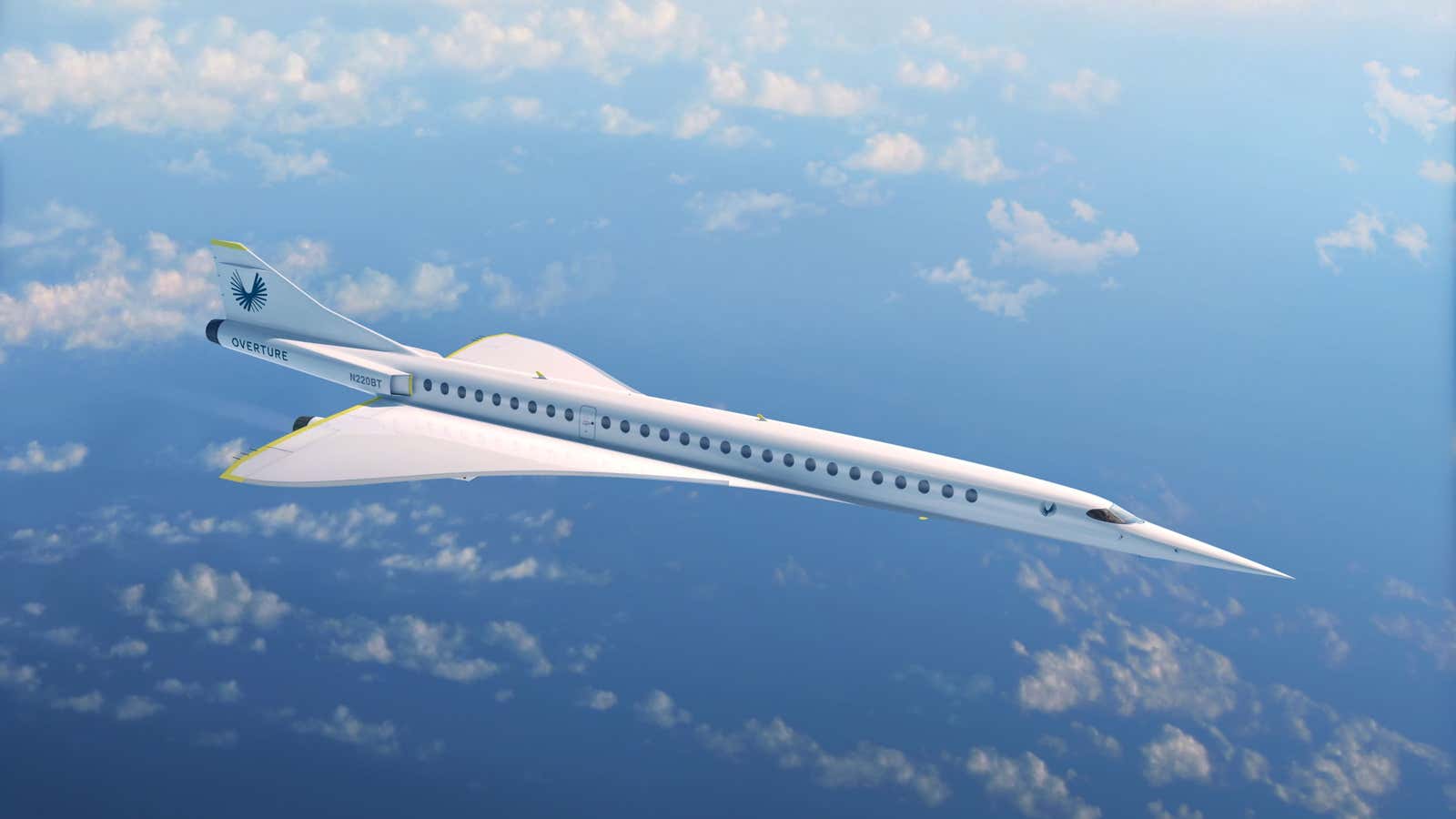For more on supersonic planes, check out the fourth episode of Should This Exist? the podcast that debates how emerging technologies will impact humanity.
There’s no denying it: Traveling is more enjoyable when you’ve got more to spend, even if you can’t afford a private jet. Pay enough and you can breeze through airport security. Splurge on a premium seat, and long-haul flights become (dare we say?) pleasant. Spend more dough—a lot more—and you can skip security altogether and get delivered to the tarmac (membership) in a personal Mercedes.
That’s all convenient for a standard commercial flight, of course. But at the end of the day, there’s no way to change how long it takes to fly from New York to London. Right?
Several companies are looking to change that fundamental aspect of the way most of us travel. Boom Supersonic, Spike Aerospace, and Boeing/Aerion are all working to engineer commercial jets that can fly faster than the speed of sound. Airlines are betting the trend of faster flying is going to be the next big thing—Japan Airlines and Virgin have already invested in Boom.
There’s evidence the companies’ gamble on time-saving tech might be a good one. The primary reason people take private jets is to save time, according to a poll by Business Jet Traveler. But most people can’t afford the several thousands of dollars per hour to charter a private jet, much less have the millions to buy one. The same principle holds true no matter travelers’ price points—price and total time spent traveling were two of the most important factors for people deciding to travel by air, according to a 2016 report (pdf) from trade organization Airlines for America.
And after all, creating fast-moving versions of standard means of conveyance has become big business worldwide. Japan has had high-speed trains, called Shinkansen, for more than 50 years, and it set record profits in 2017, mostly from freight services. Profits from Europe’s high-speed rail, Eurostar, have also risen in recent years.
But faster travel doesn’t always equal better business. Financial projections for some newer high-speed rail systems, such as China’s, are less sunny, while in the US and Mexico high-speed rails have never come to fruition. These financial woes are caused mostly by the need to create entirely new infrastructure; supersonic jets could avoid this issue because they could use existing airports.
That’s not to say the path is totally clear for these new supersonic jets. One concern: The boom sound created when they cross the sound barrier could be a nuisance to those on the ground (Boom’s planes will only fly at supersonic speeds over ocean, so the sonic boom won’t be an issue, a spokesperson says). And the planes would emit more carbon per traveler than today’s standard planes (though if the planes are traveling faster, they might actually burn less fuel on long flights). Naturally, there’s already talk of loosening noise and fuel regulations to accommodate these new supersonic fleets, which would likely take years.
Booking a ticket on a supersonic jet may still be too expensive for most. Fewer seats and higher fuel demands mean prices could be higher than premium seats today; Boom, which doesn’t intend to market itself as a luxury brand, expects to charge about the same price as a business class ticket, a spokesperson says, though exact prices will be set by airlines.
In fact, it was in part the high costs that sunk the Concorde, the supersonic airline that flew until 2003. Could things be different this time around?
We might find out soon enough. Boom, Boeing/Aerion, and Spike all hope to get their super fast jets in the air by 2023. Only then will we know if saving time in the sky truly means big business.
Should This Exist? is a podcast, hosted by Caterina Fake, that debates how emerging technologies will impact humanity. Listen here for a more in-depth conversation on evaluating the human side of technology.
Correction: This piece has been updated to reflect comments from a Boom spokesperson about the expected price, noise, and fuel efficiency of the company’s jets.
